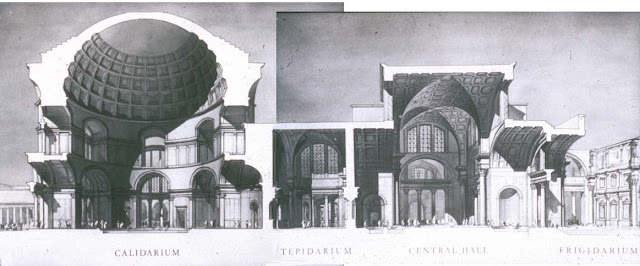The Baths of Caracalla
The Baths of Caracalla, also known as Thermae Antoninianae, were one of the largest and most impressive public baths of ancient Rome. Built in the 3rd century AD during the reign of Emperor Caracalla, they were designed to accommodate up to 1,600 bathers at once. The complex spanned over 33 acres and included not only baths but also gardens, libraries, lecture halls, and even a gymnasium.
The Baths of Caracalla were a significant example of Roman concrete architecture, which utilized a unique combination of volcanic ash, lime, and small stones to create a durable and long-lasting material. The complex featured impressive vaulted ceilings, soaring arches, and an enormous central dome that was larger than the one at the Pantheon. The building was decorated with beautiful marble sculptures, mosaics, and frescoes that adorned the walls and floors of the various rooms.
The significance of the Baths of Caracalla to young architects lies in their legacy as a symbol of Roman engineering and architectural prowess. They offer a valuable lesson in the use of concrete as a building material and the importance of incorporating functionality, beauty, and public accessibility into the design of large-scale public works.
This video shows recreation of how the baths were when completed.



Comments
Post a Comment